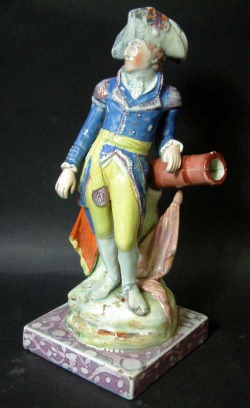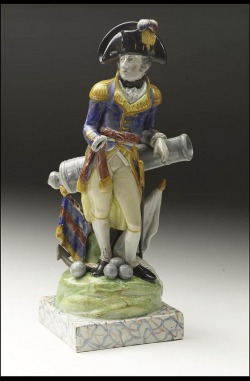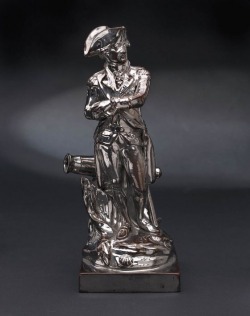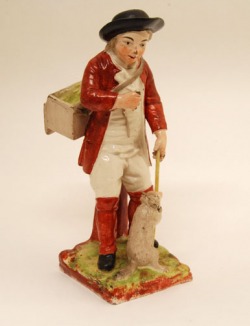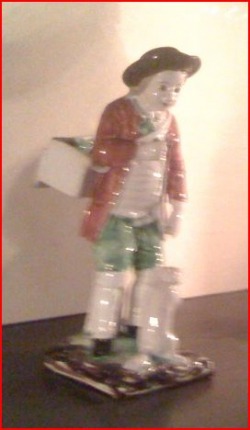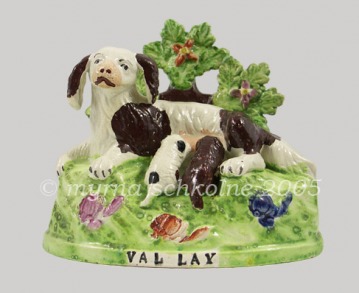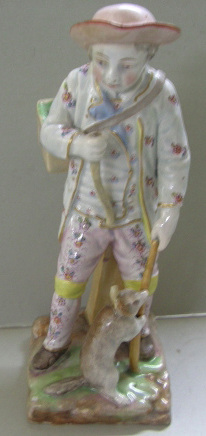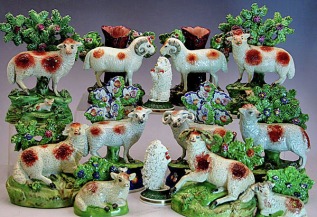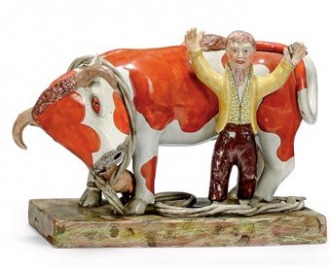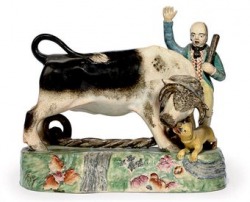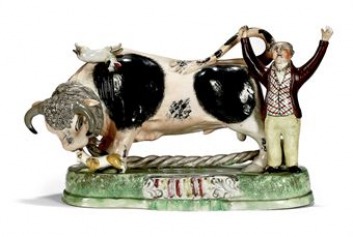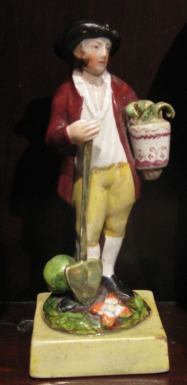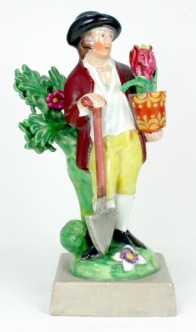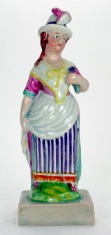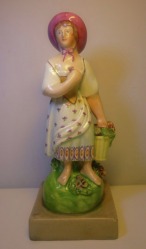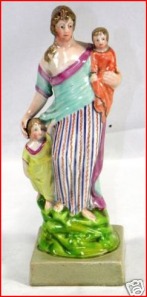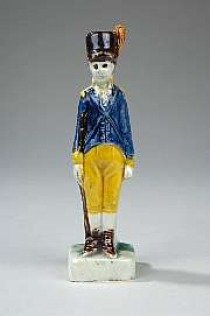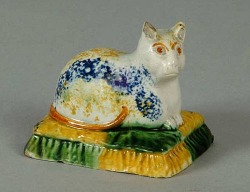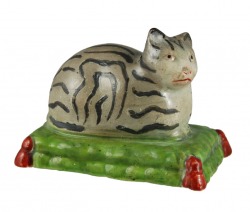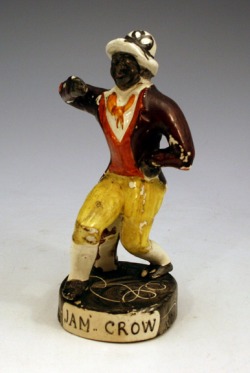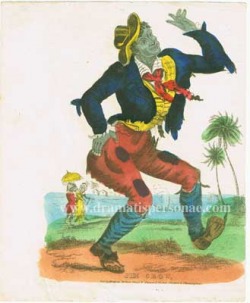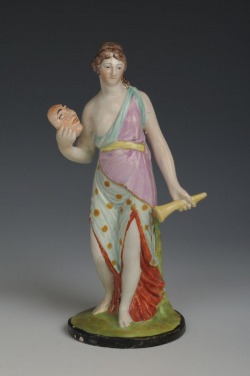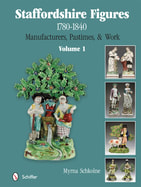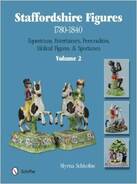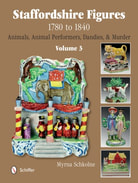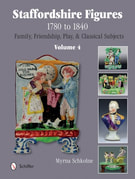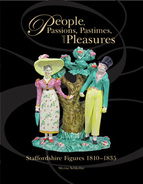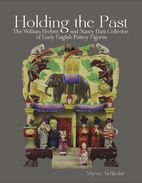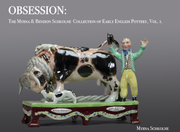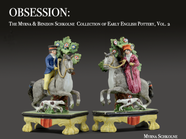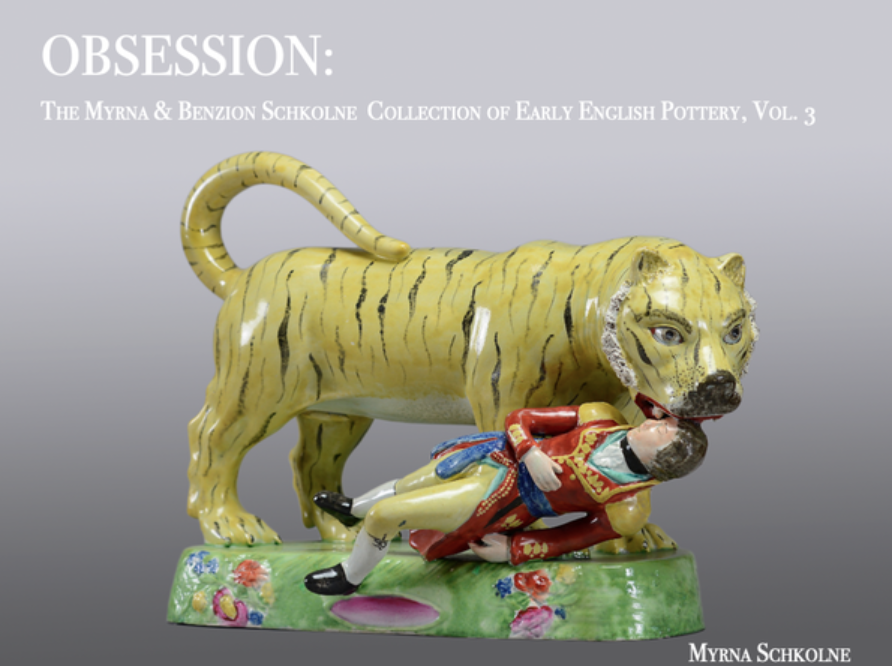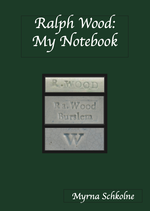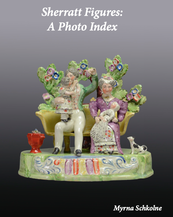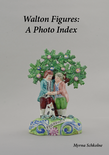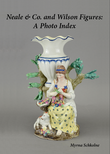In the next few years, I saw other copies of this figure. His identity varied. Napoleon, the Duke of York, the Duke of Wellington, Nelson…take your pick. Comparing the figures to portraits was little use. Decked in military finery, these officers all look rather alike. And then I found this figure in the collection of The London National Maritime Museum.
The Maritime Museum has another figure that it describes as Nelson--and here I don't disagree because the mold is not quite the same. The result mimics the appearance of Nelson's after his partial amputation in 1797.
Knowing facts like these doesn't just scratch a mental itch. It really helps date our figures. Arthur Wesley was created Duke of Wellington in 1814--so the Potteries figure definitely dates from after that date. Possibly my collector's untitled figure was made at the same time. Or possibly it was made earlier to represent some other military hero and it was conveniently titled in Wellington's honor after his success on the battlefield in 1814.
Fascinating Factoid.
The silver luster figure of Nelson, above, can be dated to between 1805 and 1818. Silver luster was only introduced commercially after 1805, so the figure couldn't have been made earlier. And Wood and Caldwell, who made this figure, dissolved their partnership in 1818, so the figure was not made any later. Why the interest in Nelson so many years after his demise? No surprise really. Interest in Nelson is unabated today.
